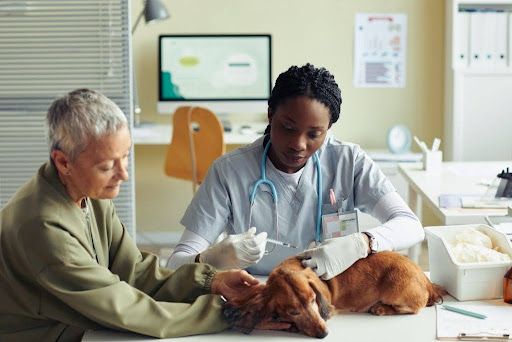Essential Skills for Handling Emergencies Before Vet Urgent Care

Emergencies can happen unexpectedly, and being prepared to handle them effectively can make all the difference in ensuring the health and safety of our pets.
While veterinary urgent care is crucial for addressing serious medical emergencies, there are essential skills that pet owners can learn to provide immediate assistance and stabilize their pets before professional help is available.
In this article, we’ll explore these essential skills and how they can help pet owners respond confidently and effectively to emergencies.
Understanding Common Pet Emergencies
Before diving into specific skills, pet owners need to understand the most common types of pet emergencies that may arise. These emergencies can include choking, poisoning, heatstroke, seizures, bleeding, fractures, and respiratory distress, among others.
By familiarizing themselves with the signs and symptoms of these emergencies, pet owners can act quickly and decisively when their pet’s health is at risk. They can also visit emergency pet hospitals to avoid any pet emergency.
Recognizing Signs of Distress
The first step in handling pet emergencies is recognizing when your pet is in distress. Pay close attention to changes in behavior, such as excessive panting, drooling, lethargy, agitation, vomiting, diarrhea, or difficulty breathing.
Monitor your pet’s vital signs, including their heart rate, respiratory rate, and temperature, and be alert to any signs of pain or discomfort. Trust your instincts and seek veterinary assistance if you suspect your pet may be experiencing an emergency.
Developing Basic First Aid Skills
Pet owners can benefit greatly from learning basic first aid skills to administer immediate care in emergencies. These skills may include:
CPR (Cardiopulmonary Resuscitation)
Knowing how to perform CPR can be life-saving in cases of cardiac arrest or respiratory failure. Pet owners can learn how to administer chest compressions and rescue breaths to help maintain circulation and oxygenation until professional help is available.
Heimlich Maneuver
The Heimlich maneuver can be used to dislodge objects obstructing the airway and prevent choking in pets. Pet owners should learn how to perform abdominal thrusts to expel foreign objects from their pet’s throat safely.
Bandaging and Wound Care
Being able to administer basic wound care and apply bandages can help control bleeding and prevent infection in cases of injuries or lacerations. Pet owners should learn how to clean wounds, apply pressure to stop bleeding, and secure bandages properly.
Splinting and Immobilization
In cases of fractures or musculoskeletal injuries, immobilizing the affected area can help prevent further damage and reduce pain. Pet owners can learn how to create makeshift splints using household items and immobilize injured limbs until veterinary care is available.
Creating a Pet First Aid Kit
Having a well-stocked pet first aid kit on hand can be invaluable in emergencies, providing essential supplies and equipment to administer immediate care. Pet owners should assemble a first aid kit containing items such as gauze pads, adhesive tape, bandages, antiseptic wipes, hydrogen peroxide, tweezers, scissors, a digital thermometer, a muzzle or restraint device, and contact information for emergency veterinary services.
Keeping Calm and Staying Safe
In any emergency, pet owners need to remain calm and composed, as pets can pick up on their owner’s emotions. Speak to your pet in a soothing voice and avoid panicking or becoming agitated, as this can escalate the situation. Additionally, ensure your own safety by assessing the environment for any potential hazards or risks before intervening to help your pet.
Knowing When to Seek Professional Help
While basic first aid skills can be invaluable in providing immediate care, pet owners need to recognize when a situation requires professional veterinary assistance. If your pet’s condition is severe or does not improve with initial first aid measures, seek urgent veterinary care immediately. Contact your veterinarian or an emergency veterinary clinic for guidance, and be prepared to transport your pet safely to receive professional medical attention.
Communication with Veterinary Professionals
When seeking professional help for your pet, effective communication with veterinary professionals is key. Provide detailed information about your pet’s symptoms, medical history, and any first aid measures you’ve administered, as this will help veterinarians assess the situation and provide appropriate treatment. Follow their instructions carefully and be prepared to advocate for your pet’s needs if necessary.
Conclusion
In conclusion, developing essential skills for handling emergencies before veterinary urgent care is crucial for pet owners to respond confidently and effectively to unexpected situations.
By understanding common pet emergencies, recognizing signs of distress, learning basic first aid skills, creating a pet first aid kit, staying calm and safe, knowing when to seek professional help, and communicating effectively with veterinary professionals, pet owners can play a vital role in providing immediate care and support to their furry companions in times of need.
With preparation, practice, and a proactive approach to pet safety, pet owners can be better equipped to handle emergencies and safeguard the health and well-being of their beloved pets.



